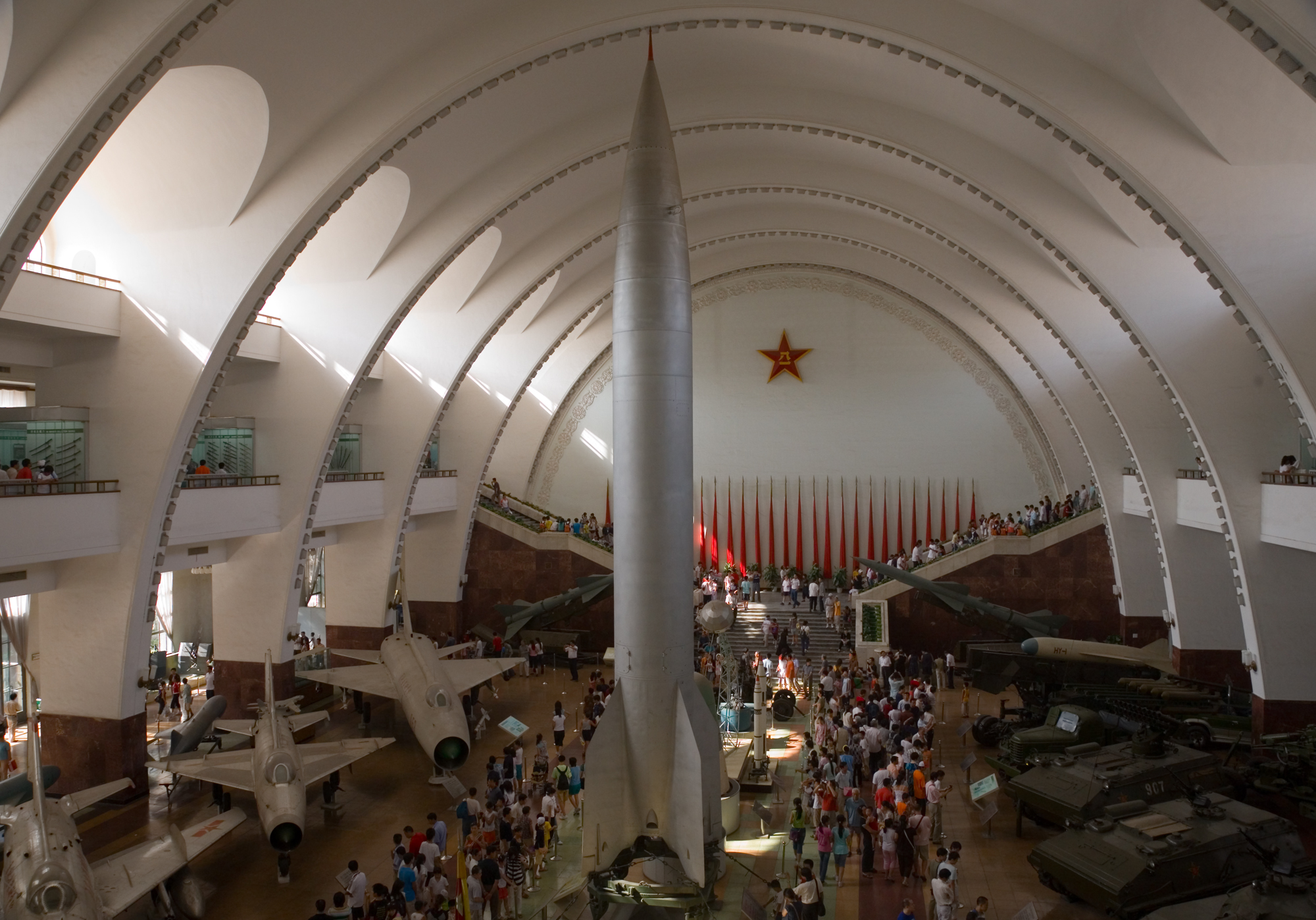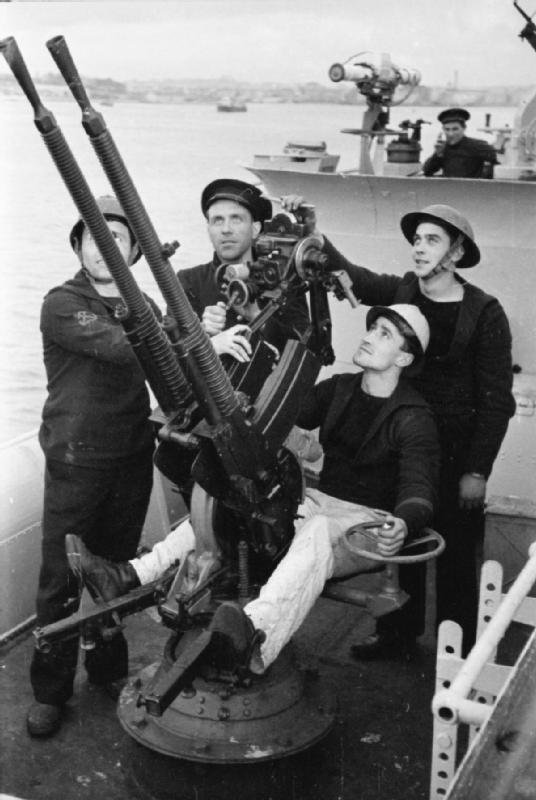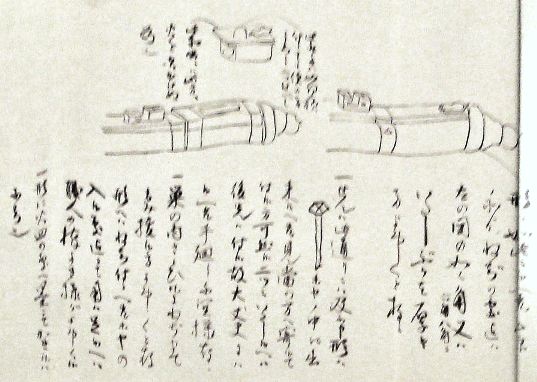|
Type 98 20 Mm AA Machine Cannon
The Type 98 20 mm AA machine cannon was the most common light anti-aircraft gun of the Imperial Japanese Army. It entered service in 1938 and was used until the end of World War II. After World War II this gun was used by the Indonesian Army in the Indonesian National Revolution and North Vietnam in First Indochina War. Design and use The Type 98 20 mm AA machine cannon was the most common light anti-aircraft gun of the Japanese military. The Type 98 designation was given to this gun as it was accepted in the year 2598 of the Japanese calendar (1938).War Department TM-E-30-480 ''Handbook on Japanese Military Forces''. September 1944, p. 400. It entered service that same year and first saw combat in Nomonhan. It was used until the end of World War II. About 80% of the Imperial Japanese Army light AA guns were Type 98s. The gun could be emplaced in about three minutes by an experienced crew or fired inaccurately from its wheels. This weapon and its variants were based on ... [...More Info...] [...Related Items...] OR: [Wikipedia] [Google] [Baidu] |
China People's Revolution Military Museum
The Military Museum of the Chinese People's Revolution or China People's Revolution Military Museum () is a museum located in Haidian District, Beijing, China that displays restored military equipment from the history of the People's Liberation Army, up to and including modern-day machinery. One of the Ten Great Buildings erected in celebration of the ten-year anniversary of the founding of the People's Republic of China, construction of the museum began in October 1958 and ended in 1960. Collections The museum's four floors include ten halls, the largest of which is the Hall of Weapons. The Hall's extensive holdings of antiquated weaponry showcase domestic and foreign weapons, including blades, small arms, artillery, tanks, armored personnel carriers, anti-air weaponry, jet fighters, rockets and rocket launchers, and cruise missiles. Foreign weapons include Soviet tanks purchased or donated during the 1950s and 1960s, Japanese weaponry captured during the Second Sino-Japane ... [...More Info...] [...Related Items...] OR: [Wikipedia] [Google] [Baidu] |
Hotchkiss M1929 Machine Gun
The 13.2 mm Hotchkiss machine gun model 1929, often simplified to Hotchkiss M1929 machine gun, and the like, was a heavy machine gun designed and manufactured by Hotchkiss et Cie from the late 1920s until World War II which saw service with various nations' forces, including Italy and Japan where the gun was built under license. Development In the late 1920s, Hotchkiss proposed a range of anti-aircraft automatic weapons in the 13.2, 25 and 37 mm calibers. They were all based on the same type of Gas-operated reloading, gas-operated action, similar to the one used in the 8 mm Hotchkiss Mle 1914 machine gun, which had proven extremely reliable during World War I and was still in service. This led to the production of the 13.2 mm Hotchkiss machine gun model 1929, often called the Hotchkiss M1929. Performance The Hotchkiss M1929 machine gun had a Rate of fire#Cyclic rate, cyclic rate of fire of 450 rounds per minute, but their practical sustained rate of fire wa ... [...More Info...] [...Related Items...] OR: [Wikipedia] [Google] [Baidu] |
World War II Weapons Of Japan
In its most general sense, the term "world" refers to the totality of entities, to the whole of reality or to everything that is. The nature of the world has been conceptualized differently in different fields. Some conceptions see the world as unique while others talk of a "plurality of worlds". Some treat the world as one simple object while others analyze the world as a complex made up of many parts. In ''scientific cosmology'' the world or universe is commonly defined as " e totality of all space and time; all that is, has been, and will be". '' Theories of modality'', on the other hand, talk of possible worlds as complete and consistent ways how things could have been. ''Phenomenology'', starting from the horizon of co-given objects present in the periphery of every experience, defines the world as the biggest horizon or the "horizon of all horizons". In ''philosophy of mind'', the world is commonly contrasted with the mind as that which is represented by the mind. ''Th ... [...More Info...] [...Related Items...] OR: [Wikipedia] [Google] [Baidu] |
Anti-aircraft Guns Of Japan
Anti-aircraft warfare, counter-air or air defence forces is the battlespace response to aerial warfare, defined by NATO as "all measures designed to nullify or reduce the effectiveness of hostile air action".AAP-6 It includes surface based, subsurface ( submarine launched), and air-based weapon systems, associated sensor systems, command and control arrangements, and passive measures (e.g. barrage balloons). It may be used to protect naval, ground, and air forces in any location. However, for most countries, the main effort has tended to be homeland defence. NATO refers to airborne air defence as counter-air and naval air defence as anti-aircraft warfare. Missile defence is an extension of air defence, as are initiatives to adapt air defence to the task of intercepting any projectile in flight. In some countries, such as Britain and Germany during the Second World War, the Soviet Union, and modern NATO and the United States, ground-based air defence and air defence aircraft h ... [...More Info...] [...Related Items...] OR: [Wikipedia] [Google] [Baidu] |
World War II Anti-aircraft Guns
In its most general sense, the term "world" refers to the totality of entities, to the whole of reality or to everything that is. The nature of the world has been conceptualized differently in different fields. Some conceptions see the world as unique while others talk of a "plurality of worlds". Some treat the world as one simple object while others analyze the world as a complex made up of many parts. In ''scientific cosmology'' the world or universe is commonly defined as " e totality of all space and time; all that is, has been, and will be". '' Theories of modality'', on the other hand, talk of possible worlds as complete and consistent ways how things could have been. ''Phenomenology'', starting from the horizon of co-given objects present in the periphery of every experience, defines the world as the biggest horizon or the "horizon of all horizons". In ''philosophy of mind'', the world is commonly contrasted with the mind as that which is represented by the mind. ''Th ... [...More Info...] [...Related Items...] OR: [Wikipedia] [Google] [Baidu] |
Artillery Of Japan
Artillery in Japan was first used during the Sengoku period in the 16th century; and its use has continued to develop. History 13th to 17th century Due to its proximity with China, Japan had long been familiar with gunpowder. Primitive cannons seem to have appeared in Japan around 1270, as simple metal tubes invented in China and called ''Teppō'' (鉄砲 Lit. "Iron cannon"). They don't seem to have been used extensively however, and cannon usage would only become major after the arrival of the Portuguese in 1543. A few light cannon pieces were used at the Battle of Nagashino in 1575, but the first cannons entirely made by the Japanese were cast a few months after the battle. They were bronze two-pounders, about 9 feet long, and were delivered to the warlord Oda Nobunaga. The first Japanese matchlock guns were designed by the Japanese after Tanegashima Tokitaka bought two matchlock guns from Portuguese adventurers who were aboard a Chinese junk ship in Tanegashima. Within ten ... [...More Info...] [...Related Items...] OR: [Wikipedia] [Google] [Baidu] |
Type 97 Automatic Cannon
The is a Japanese anti-tank rifle that began development in the 1930s. It was used by the Imperial Japanese Army (IJA) during the Second Sino-Japanese War, the Soviet–Japanese border conflicts and the Pacific War. Ever-greater thicknesses of armour on tanks rendered the Type 97 obsolete by about 1942. Development and description Concerned by reports of Chinese purchases of Vickers 6-Ton, Vickers six-ton tanksZaloga, p. 29 and rising tensions with the Soviet Red Army along the Manchurian border,Ness, p. 92 the IJA issued a requirement for an anti-tank rifle in 1935. The Nagoya Arsenal submitted a weapon derived from their copy of the Hotchkiss M1929 machine gun while the Kokura Arsenal submitted a new design using a 20×125 mm cartridge. The first round of testing in March 1936 was not satisfactory and both guns were returned to their designers to rectify problems encountered during the trials. The Kokura Arsenal built eight prototypes for the second round of trials held at the ... [...More Info...] [...Related Items...] OR: [Wikipedia] [Google] [Baidu] |
Type 98 20 Mm AAG Tank
The Type 98 20 mm AAG (anti-air gun) tank was a Japanese self-propelled anti-aircraft gun using a twin Soki Type II 20 mm anti-air gun. They were combined with the chassis of the Type 98 Ke-Ni. The gun crew worked from a raised platform with a modest amount of protection from the sides - the twin 20 mm gun fired through a large gun shield gave further protection for the crew from that direction. In November 1941, development began on an anti-aircraft version of the Type 98 with a 20 mm AA gun. During development of the AA gun tank, the Imperial Japanese Army experimented with various configurations. Single gun variant An earlier produced single gun prototype was designated the ''Type 98 Ta-Se'' anti-aircraft tank, in November 1941. The name was taken from ''taikū'' ('anti-air') ''sensha'' ('tank'). It was equipped with a single converted Type 98 20 mm AA machine cannon in a circumferential turret. During trials, it was determined that the chassis used for the ... [...More Info...] [...Related Items...] OR: [Wikipedia] [Google] [Baidu] |
Type 98 20 Mm AA Half-track Vehicle
The Type 98 20 mm AA half-track vehicle was an experimental Japanese self-propelled anti-aircraft gun. It had a single 20 mm Type 98 AA cannon mounted on the back section of a Type 98 four-ton half-track. The modified vehicle used was designated the Type 98 half-tracked prime mover Ko-Hi. The Type 98 Ko-Hi was first manufactured in 1938 by Isuzu. The Type 98 four-ton vehicles were "high speed" prime movers, capable of when loaded. Average transport time was 10 hours road time for . It had a diesel engine and required a crew of 15 to operate. The rear-mounted Type 98 20 mm AA autocannon was the most common light anti-aircraft gun of the Imperial Japanese Army. It had a range of 5,500 meters, altitude of 3,500 meters and could fire up to 300 rounds per minute. See also * 20 mm AA machine cannon carrier * Type 98 20 mm AAG tank The Type 98 20 mm AAG (anti-air gun) tank was a Japanese self-propelled anti-aircraft gun using a twin Soki Type II 20 mm ant ... [...More Info...] [...Related Items...] OR: [Wikipedia] [Google] [Baidu] |
Type 4 20 Mm Twin AA Machine Cannon
Type 4 20 mm twin AA machine cannon was an Imperial Japanese Army (IJA) anti-aircraft gun. It consisted of two Type 98 20 mm AA machine cannon. It was introduced in 1944 and approximately 500 guns were produced. The Type 98 20 mm AA machine cannon was the most common light anti-aircraft gun of the Japanese military and the IJA used it until the end of World War II World War II or the Second World War, often abbreviated as WWII or WW2, was a world war that lasted from 1939 to 1945. It involved the vast majority of the world's countries—including all of the great powers—forming two opposin ....War Department TM-E-30-480 ''Handbook on Japanese Military Forces'' September 1944 p. 400. References Notes {{reflist Sources * War Department TM-E-30-480 ''Handbook on Japanese Military Forces'', September 1944. Taki's Imperial Japanese Army Page: Type 4 20 mm twin AA Machine Cannon - Akira Takizawa World War II anti-aircraft guns Anti-aircraft guns of Ja ... [...More Info...] [...Related Items...] OR: [Wikipedia] [Google] [Baidu] |
Secret And Special Weapons In Showa Japan
Secrecy is the practice of hiding information from certain individuals or groups who do not have the "need to know", perhaps while sharing it with other individuals. That which is kept hidden is known as the secret. Secrecy is often controversial, depending on the content or nature of the secret, the group or people keeping the secret, and the motivation for secrecy. Secrecy by government entities is often decried as excessive or in promotion of poor operation; excessive revelation of information on individuals can conflict with virtues of privacy and confidentiality. It is often contrasted with social transparency. Secrecy can exist in a number of different ways: encoding or encryption (where mathematical and technical strategies are used to hide messages), true secrecy (where restrictions are put upon those who take part of the message, such as through government security classification) and obfuscation, where secrets are hidden in plain sight behind complex idiosyncra ... [...More Info...] [...Related Items...] OR: [Wikipedia] [Google] [Baidu] |







